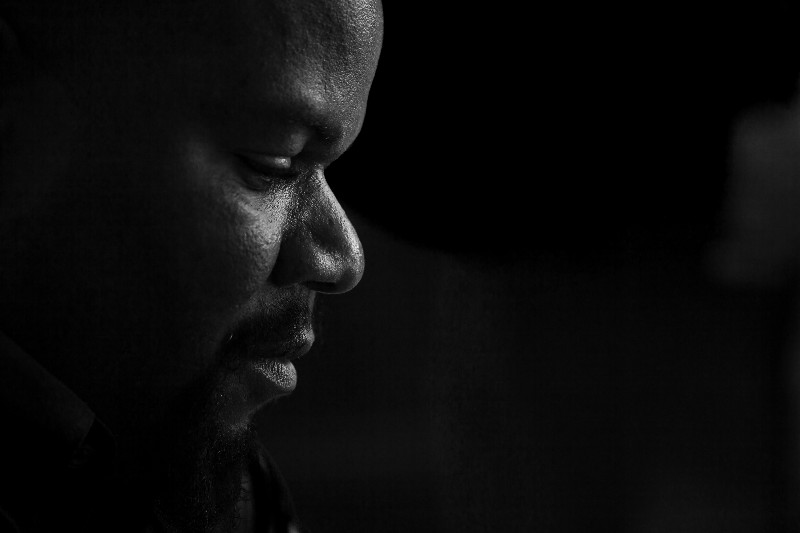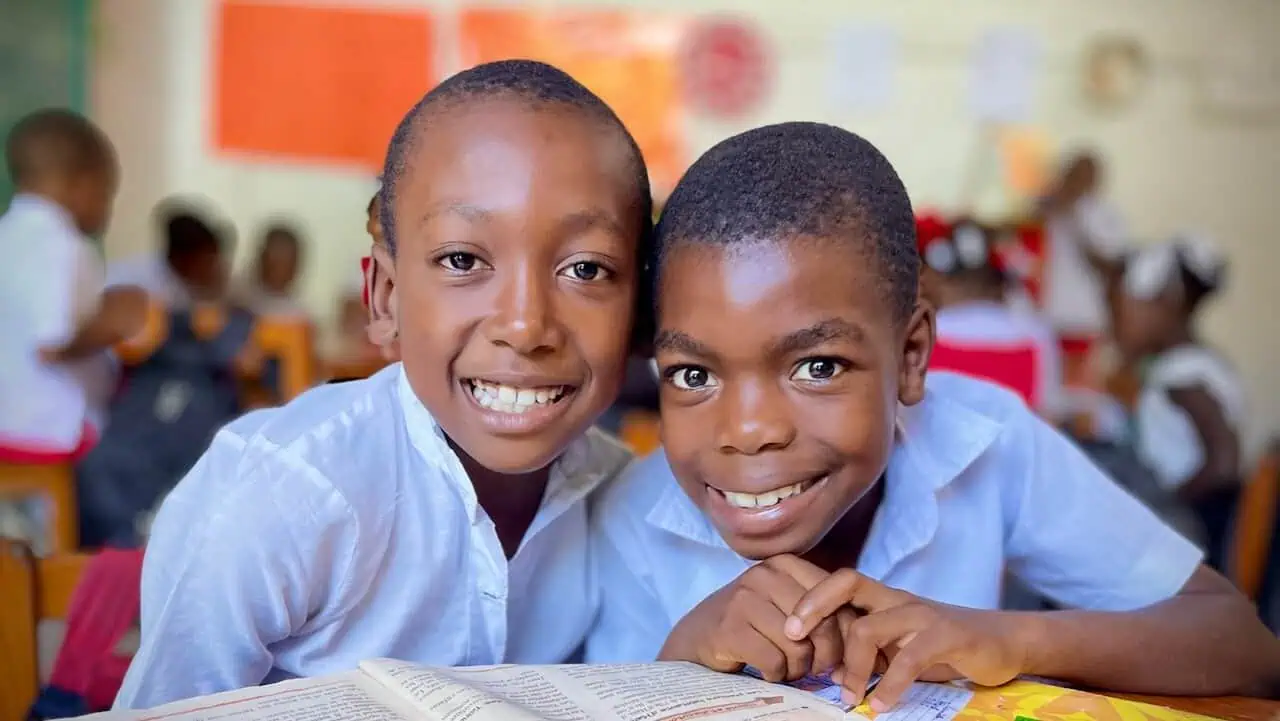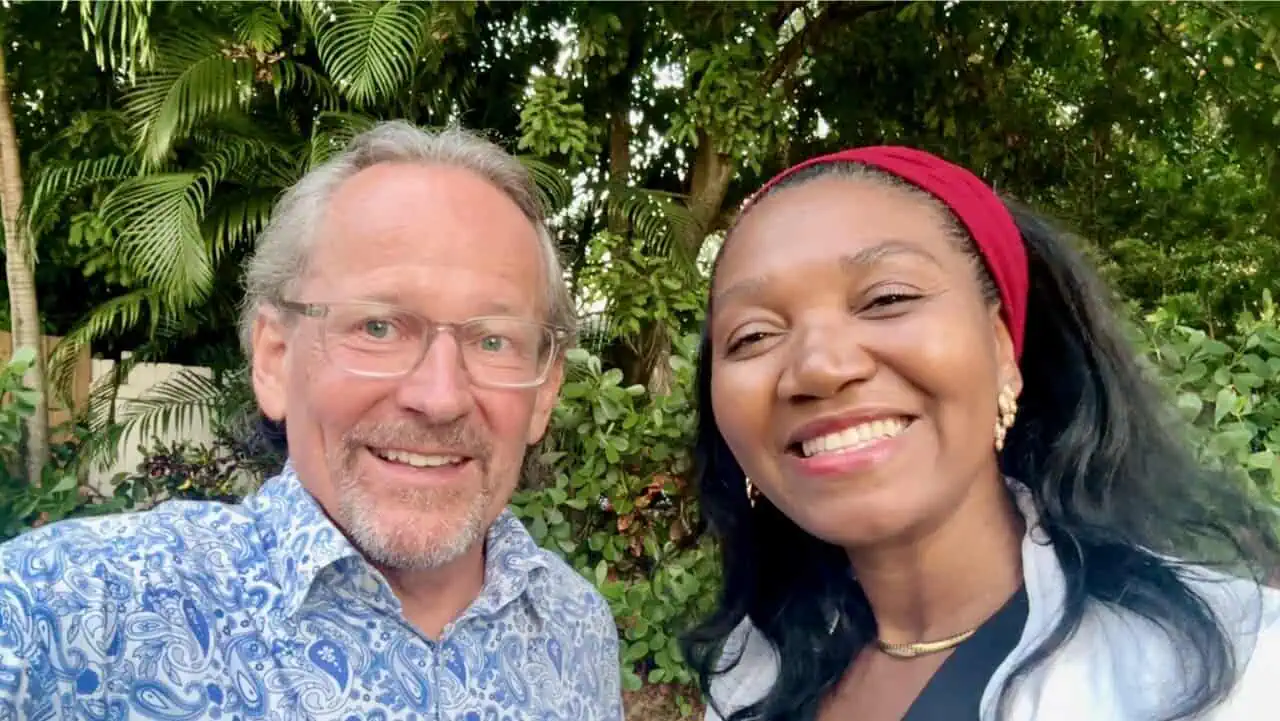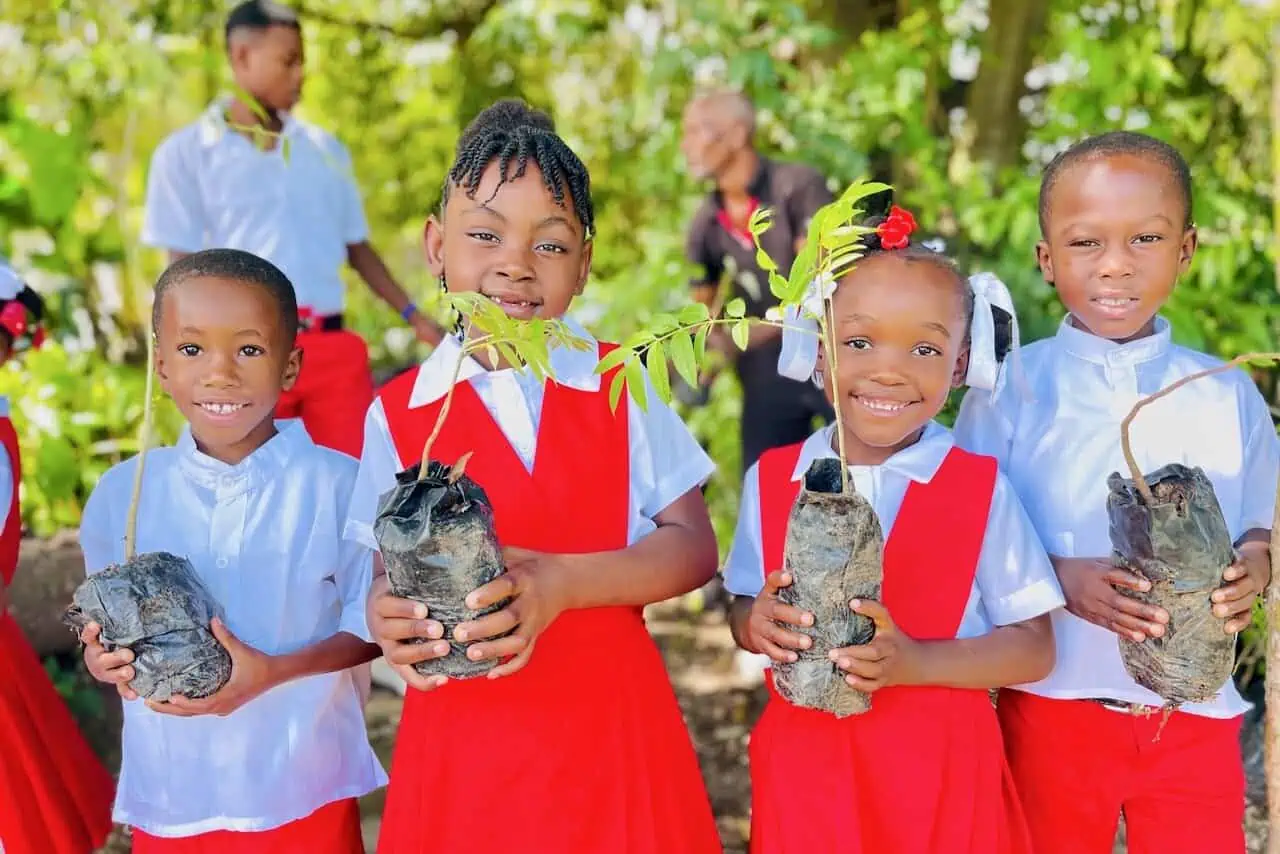January 12, 2010, Enel is working in our office just off Rue Delmas, a main street of Port-au- Prince that runs up the middle of the city, past the boys who rub your windshield with a dirty rag for change, past a couple of grocery stores for the small middle- and upper-class, past the gas stations, and ends where it forks on either side of the Petionville cemetery.
He leaves the office, walks up the street a block and climbs the stairs to the third floor of a six-floor university building for his afternoon class on pedagogy. The professor is late, so Enel goes to the back to talk with a couple of friends about missed homework. Twenty-five classmates chat and wait.
The building starts to shake. Then more violently. Enel grabs the iron bars over the open window beside him.
Shaking and shaking, stronger and stronger.
The building comes crashing down with all of them inside.
Enel holds on to the window as he falls.
A large slab of concrete — one of the walls or a section of ceiling — hits him hard in the back, but then likely saves his life as he lays shielded under it.
Three more stories come crashing down. The two friends he was talking with are also alive. They each dig themselves out in about fifteen minutes and then scatter, as they’re able, to find loved ones. Crushed classmates are strewn nearby. Others are unseen, buried. Cries of “Amway!” Help! come from different directions in the rubble.
Enel can barely walk. At first he thinks only their building fell. A stranger walking by puts an arm around him to help him limp two blocks to the place where he’d normally catch a bus toward his home outside the city. At the corner they pass a girl with her hand reaching out through the concrete, calling out, “Sove m! Sove m!” Save me! Save me! and he can only limp by. He realizes as they go that it’s not just his building, or his block, or that neighborhood. Something vast has happened.
A fault-line jolts a wide, jagged line of victims simultaneously. A tsunami crashes in along the shore, hits in an instant all in its path. But consciousness of horror like this spreads more like concentric waves moving out from a pebble — or gigantic boulder — dropped in a lake.
Enel arrives at an intersection normally jostling with vehicles and pedestrians. Now it’s filled with people who are stunned and injured, people who are lying streetside, some with crushed limbs, some newly dead. Enel sits, then lies down. He realizes he can’t get up. His adrenaline reserves are spent.
A lot of people I talked with in Port-au-Prince said they initially thought it was just their building, and then just their block, and then they started to realize the scope.
Enel’s face (like those in the eerie, early pictures) is covered with fine concrete dust from the collapsed school, from the dust that rose after a city of two million people was shaken like an old rug.
And he is thirsty. So thirsty. Dusk is settling in. He doesn’t think he will make it through the night because his mouth and throat are caked with dust. It feels hard to breathe. Soon after he thinks about this, a different stranger walking by pauses, holds a small bag of water, pours some to gently wipe the caked dust off Enel’s face, then gives him the rest of the water to drink. The stranger continues on his way.
Night is arriving. Hundreds of people assemble in the public square where Enel is lying because their homes have collapsed or are unsafe. Just across the intersection, a mutual friend and colleague of mine and Enel’s, Guilloteau, is also spending the night in the square with his wife and young son, Max. Guilloteau had been in his church, which didn’t collapse. An elementary school across the street did. Guilloteau and others immediately started helping to pull children out of the school.
In the middle of helping, Guilloteau suddenly thought of his wife and young son. He took off sprinting through the city’s devastated streets, past more people crying out for help, running many blocks in his dress shoes. He found his family outside their apartment. They were safe, but the apartment wasn’t any longer.
In the dark there were aftershocks and fear. What was it like spending the night lying in that square with hundreds of people, unable to move? What sounds mingled with the dust in the air? Cries of agony? Silence in the face of such disaster? Moans of those in pain? Hushed conversations as people who were able tried to comfort each other?
“No,” Enel says. “All night long we were singing and praying to God.”
They sang church hymns together. Other times people improvised their own hymns in response to what they’d just survived. And they prayed.
Angry prayers? Questioning prayers?
No, mostly prayers of gratitude because we were spared, Enel tells me, and prayers for those who didn’t. All night long.






